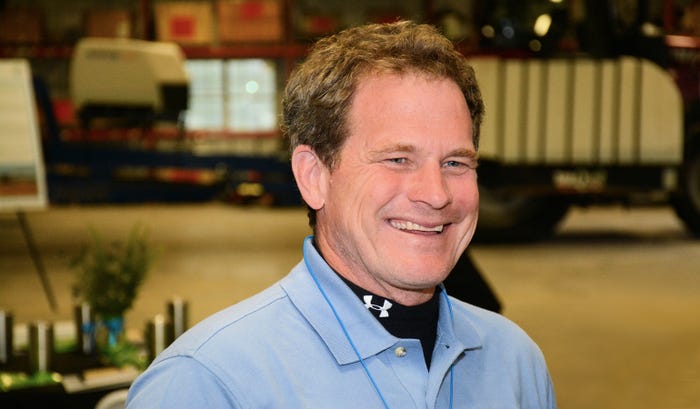
As you’ve read in parts one through five, it’s important for farmers to understand the greenhouse gas issue. Be able to discuss policy and solutions with anyone. These articles should elevate the debate and provide depth in the conversation.
But it’s also important to tell our success stories in a way that resonates with consumers.
Some farmers have figured this out. At Maryland’s Harborview Farm, Trey Hill began to change his farming practices due to problems with Chesapeake Bay pollution. Instead of getting defensive he embraced environmental groups, changed how he farmed, and now, he’s working with Nori, a carbon removal marketplace, to make money from his efforts.

Having been on Hill’s farm and interviewed him more than once, I can tell you he is as sharp as a tack when it comes to explaining his journey toward climate-friendly farming. It’s all based on science and research.

Dr. Raymond Weil is one of several collaborators working with Hill to set up research focusing on environmental and economic outcomes of certain practices related to soil health. “Surveys show yields are around 5% higher with cover crops,” Weil says.
Unfortunately, adopting new practices, and understanding the links between climate-smart farming and greenhouse gas, is easier said than done.
“You heard so many times during quarantine that farmers were already practicing social distancing,” notes Eric Snodgrass, Nutrien atmospheric scientist and former director of undergrad studies for the department of atmospheric sciences at University of Illinois.
“We’re not a loud group. We don’t have free time on our hands to start yelling about things. As an industry we often don’t shout back.”
Is there a better way to get the message out?
“What I’d like to see from companies like my own – Nutrien, along with Cargill, the Syngentas, Bayers, Bunges -- is to not fight back with lobbyists in D.C., but instead, learn to craft a message that educates,” says Snodgrass. “We need a message that tells the process of farming and do it in a united way, to show the world how we produce feed and food so everyone can understand why we do what we do.”

Facts, storytelling – or both?
There’s a ton of factual data being surfaced on how agriculture can lower its carbon footprint. Remember, few of these “expert” sources have ever even stepped foot on a farm, but they may still be worth reading and digesting. Here are just a few:
How we can use agriculture to fight climate change – World Economic Forum
Reducing emissions through improved farming practices – McKinsey & Co. (It’s lengthy; good stuff starts on p. 17).
Agricultural practices – producing and reducing greenhouse gases – Iowa chapter Sierra Club
And, if you want to evaluate your farm’s carbon impact, try USDA’s Comet-Farm greenhouse gas accounting system or Field-to-market’s Fieldprint calculator.
But let’s face it: data can make your eyes glaze over. People pay attention to stories.
Without a clearly understood story straight from the farmer’s mouth, one that connects voters with your values, we risk destructive regulations that could drive livestock out and hamstring agriculture efficiency and profitability.
Agriculture must learn to combine science with storytelling. Just shouting facts won’t do it. We learned that lesson with the GMO fiasco.
And it’s why you see groups like the CLEAR Center, based in the UC-Davis animal sciences department. CLEAR is committed to high quality research and science communication, bringing clarity to the relationship between animal agriculture, the environment, and our daily lives.
“It’s half research and half communications, and that's unusual,” says University of California-Davis professor and air quality specialist Frank Mitloehner, who leads the center. “Most university professors would not really hire communication experts, but I feel that it is actually critical to get what we find in our research environment translated and communicated to the public sector.
“What we learn must make it in to the public’s eye,” he concludes. “Only then will it matter.”
Missed some content in this series?
Part one: Will farmers get paid to save the planet?
Part two: What’s at stake in the debate over climate change
Part three: Synthetic fertilizer is a modern miracle but it’s wrecking the atmosphere. Can we do better?
Part four: Is carbon trading an answer?
Part five: Are burping cows really a threat to humanity?
Coming in part six: Farmers, tell your story
Read more about:
ClimateAbout the Author(s)
You May Also Like






